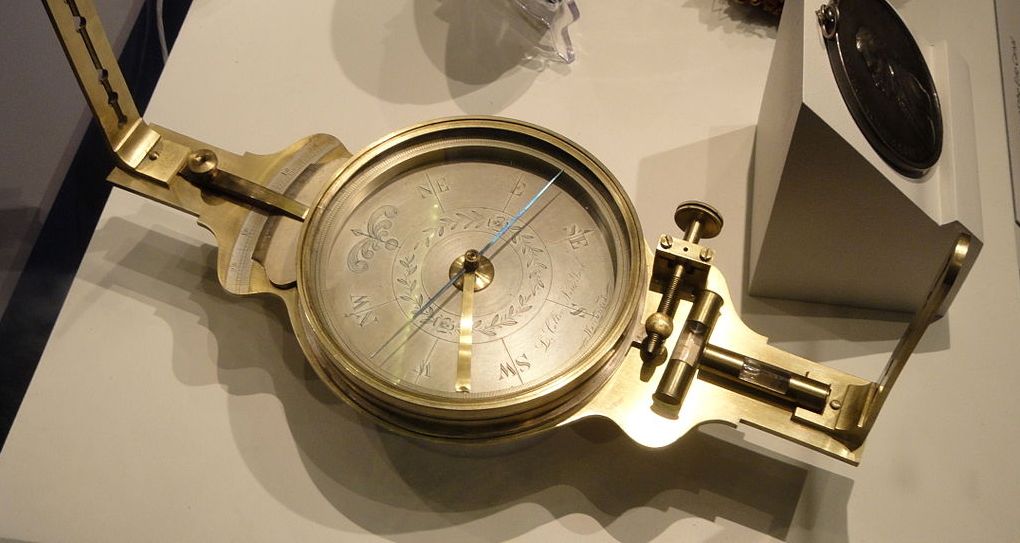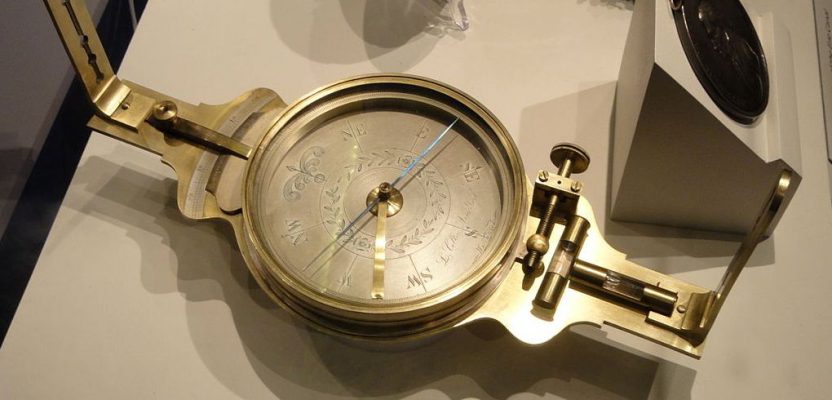Part 6 of 6: Building a Surveyor Professional Certification Program
Editor’s Note: What will regulation, certification, and licensing of the surveying profession look like in the near and distant future?
Surveying is and always has been molded by external influences: markets, technologies, economic conditions, demographics, and competition from outside of the profession. Other professionals, consumers, and pro-sumers have found that the legacy mysteries of precise measurement are within reach (of course, while also wholly misunderstanding the professional and legal aspects of surveying). These developments have converged with recent re-examinations of a seemingly immutable element of numerous professions—licensing. Right or wrong, these developments need to be discussed.
Instead of ignoring the possibility of such changes, one of our regular contributors tackles the question, “What do we do next?” with a six-part series examining how the profession could prepare for what was previously assumed unthinkable. Al also provides suggestions on how the educational arm of the profession could prepare for a future that could be more certification-oriented than strictly regulated or licensed as it is today.
While xyHt neither agrees or disagrees with op-ed articles we run, we do endorse an open and frank dialogue on such important subjects.
You can read part 5 here, or start from the beginning with part 1, here.
For better or worse,
… we have existing certification programs for photogrammetry and GIS provided through the American Society for Photogrammetry & Remote Sensing (ASPRS) and the GIS Certification Institute (GISCI). This means our immediate need is to develop a certification program for surveying, as this is the field where there are currently no offerings due to the coverage of regulatory licensing systems. The proposed outline of a revised program consists of the following actions:
- Adopt a clear statement that defines the scope of the surveying profession. Such a statement should differentiate between surveyors and other geomatics practitioners. Those of us who practice as professional surveyors must formally define the scope of practice in a manner that allows market space for the other geomatics fields; i.e., photogrammetry and mapping. We need a clear and simple way to refer to the surveying profession. Consider this the marketing message. This initial action will likely be the most difficult to complete, but we cannot take any subsequent actions without settling this issue. The U.S. Department of Labor has already adopted a Geospatial Industry Competency Model that can be the framework for the additional details needed to clarify the surveying profession and its core competencies.
- Base the new certification program on professional practice standards and best practices. Professional practice standards, recommended practices, and best practices should be developed and publicized in order to get wide acceptance of how the surveying profession should be conducted. These standards should include elements of professional judgment, not just technical skills and scientific knowledge.
- Put the new professional surveyor certification program under the direct control of the professionals it seeks to recognize. Certified professionals should be in direct control of the organization that defines them and establishes the threshold for entry into the profession. There are a sufficient number of licensed persons to make them the initial leaders, but there must be a level of balance that includes room for people who use surveying services, including members of other geomatics professions. The National Society of Professional Surveyors (NSPS) is not the right host for professional certification, as it could be seen as a proxy for existing anti-competitive regulation. An independent body that is not tasked with promoting the surveying profession and lobbying the Congress and state legislatures is needed to direct the certification program.
- Recognizing that it will take many years to create a full set of fundamental practice guides on which to base the professional certification program, adopt an interim solution. The profession should develop a transitional certification program based on the NCEES exams and model rules. Competency at the professional level may be sufficiently established as a set of basic technical skills combined with awareness of both technical and judgment issues that go beyond the ability of most practitioners. This is a “thin but broad” approach that can be filled in over time to produce a full certification regimen.
- Create a formal educational program to ensure that practitioners have the basic technical foundation for using the tools and methods of surveying. A strong educational program for new entrants and practitioners who need to know the basics and long-term professionals seeking to keep up to date should be part of the certification development process, with each adopted standard and best practice being covered by at least one course or workshop. Do not adopt a standard and then figure out how to teach people how to apply it; develop the course while creating the practice standard. The education program should also help professional surveyors fill gaps in their educational backgrounds and stay up to date on new technologies and methods. The National Geospatial Technology Center of Excellence includes scores of these educational institutions and industry participants with the ability to make this happen.
- Accredit academic programs that prepare people for entry into the surveying profession or provide continuing education. I am talking about more than ABET accreditation of a four-year program since we need to accommodate two-year programs at community colleges and continuing education courses (some groups refer to the latter as “certification maintenance”). Graduation from an accredited educational program should be recognized by a professional credential, such as “Surveyor-in-Training.”
Action 5 in the list above calls for creating a formal program that includes initial and continuing education elements. The pre-entry education programs that focus on college courses is substantially addressed by existing accreditation programs, but it will need to be extended to the community college level. A combination of certification-specific and continuing education courses will need a form of accreditation that does not currently exist. Developing courses for both levels of education is a major part of the solution, but field training experience will remain an issue that traditional classroom offerings cannot provide.

Surveying has been practiced for millennia, but licensing in U.S. states has been around for a little over a century; a substantial amount of foundational surveying was in the pre-licensing era. Many developed countries do not have licensing but have variations on education and certification. What model would best serve the profession and the public moving forward? (Image: 1846-1854 Colton Solar Compass, National Museum of American History.)
A four-year apprenticeship is not a sustainable method for gaining field experience prior to certification. Viable alternatives include a much shorter work experience period prerequisite for certification, potentially including internships, which can occur while the future-surveyor is still in school, in addition to levels of certification.
I believe that community colleges are the key to providing the surveyor education components needed to provide the productive capacity required to replenish the ranks of the surveying profession. This is an area where there is a national organization in place to coordinate the work. The name doesn’t really convey what the National Geospatial Technology Center of Excellence does, but it is nevertheless the organization to which the surveying profession needs to turn for educational programming at all levels of higher education.
I am certainly not the first to recommend moving away from regulation as the basis for the surveying profession. For example, the International Federation of Surveyors (FIG) created a task force on mutual recognition of qualifications that sought to define the universal aspects of the surveying profession so that members of that profession might have some mobility in practice (Enemark, Stig, and Frances Plimmer, Mutual Recognition of Professional Qualifications in the Surveying Profession, Aalborg, Denmark: International Federation of Surveyors, 2000. See also, Mutual Recognition of Professional Qualifications. The task force concluded that any universal definition of competence “should not be introduced with the force of government.” It distinguished competence to perform a task from professional competence, the latter being “a more complex range of skills and which includes potential to deal appropriately with new problems in a professional manner.”
FIG attempted to address the mobility of professional surveyors from country to country, which it saw as a potential market entry barrier. In the process, it compiled a catalog of methods by which practitioners in various countries became recognized as surveying professionals. All of the examples cited except two (Australia and USA) used certification by an independent body as the threshold. Australia switched to certification after the report was published, leaving only the USA with government-issued licensure. More notable, perhaps, is the lack of any sub-national professional recognition method anywhere except in the USA, where state regulation exists (for now).
However, the USA actually has state-specific legal requirements for survey products, primarily due to differences in real property ownership laws. Some state-level elements need to be included in a comprehensive solution. National certification is likely not a solution to this part of practice of the surveying profession. What then?
As noted in earlier parts of this article, there is a way for state regulation to continue for boundary surveying practice, and that is to put mostly the customers of surveying services and products on the regulatory board. Such a board could consist of the primary clients or users of surveying, such as attorneys, mortgage bankers, property appraisers, and mappers—people who are well qualified to say what products they want to receive and how they will be used.
These boards would not determine who could practice surveying, but would instead serve as a quality control mechanism for the output of surveyors. Regulation of the boundary surveying practice area, for example, could consist of product compliance reviews by the state regulatory boards, while the various professional associations and certification bodies would develop the continuously evolving means and methods for creating the products. No one would say who could practice surveying, but the market would recognize the superior capabilities of a certified professional.
This solution satisfies constitutional and other legal requirements described in Part 1 related to anti-trust and interstate commerce issues by removing the state regulatory process from control by members of the surveying profession while continuing to involve them. Combined with a unified educational framework and the voluntary certification program conducted by surveyors for themselves, this three-part solution checks off all the boxes.
This multi-part article has shown that surveying, like other professions, has been significantly affected by various federal legislative acts and court rulings. The result is that state regulation of the profession, as it exists today, is unconstitutional and anti-competitive. The surveying profession needs to construct a new foundation based upon practice standards, education, and certification. State regulatory boards may continue to exist only if they are composed of non-surveyors and focus on the products of surveying. The solution proposed here is but an example, one intended to serve not as the model but as a call to action.
The surveying profession needs to act quickly if it is to have a professional structure in place before the ineffective and illegal state regulatory system is removed.
[Editor’s footnote: This 6-part series has examined an uncomfortable subject that needs to be discussed. There have been, and likely will continue to be, court cases challenging various types of professional licensure. Surveying may not always be immune to this, and it is always a good idea to contemplate what might come of such developments as well as what actions the profession might wish to pursue in response. The dialogue has begun.]

